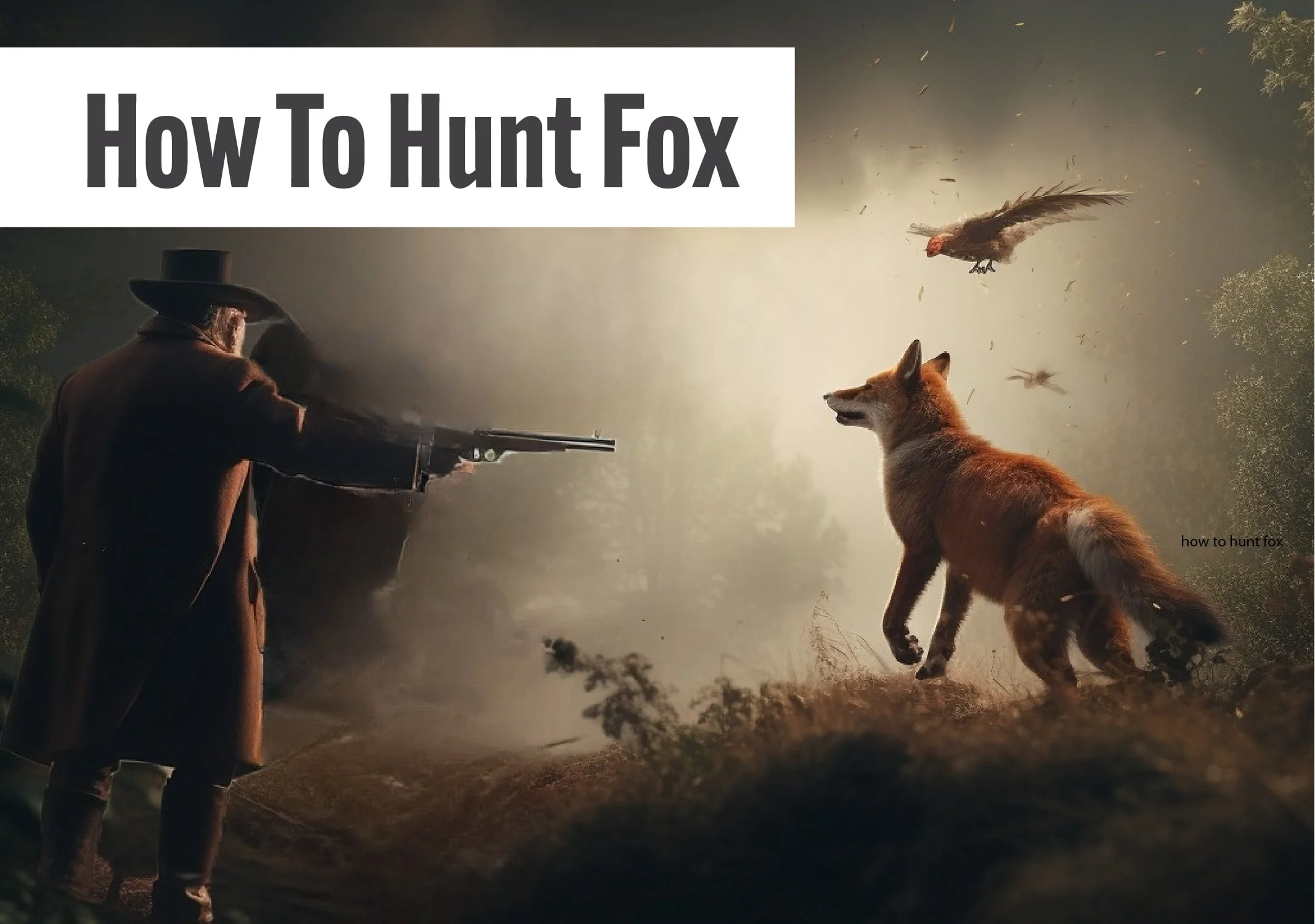
Table of Contents
Welcome, dear reader, to a comprehensive exploration of fox hunting. Our goal here isn’t just to instruct you on how to hunt foxes. Instead, we hope to transform you into a discerning sportsman who values the beauty of the hunt and the balance of nature as much as the thrill of the chase.
Before you can hunt foxes successfully, you need to understand them.
Foxes are found all over the world, but the Red Fox and the Grey Fox are the most commonly hunted species in North America. Each has a different habitat preference, with Red Foxes favoring mixed vegetation landscapes and Grey Foxes opting for wooded areas.
Foxes are mostly nocturnal but are known to be active during the dawn and dusk. They have an acute sense of hearing, which they use to hunt prey and avoid danger.
Finding a suitable hunting area is often the first step towards a successful fox hunt. Ideal locations include regions with a balance of open land and wooded areas. Foxes are adaptable creatures and can survive in various habitats, including forests, deserts, mountains, and even suburban areas. However, they generally favor environments that offer enough food sources, water, and shelter.
The geography of your hunting ground can significantly impact your strategy. For example, elevated positions offer better visibility and make it easier to spot foxes from afar. Conversely, valleys and depressions can serve as excellent hideouts for foxes, necessitating more cautious exploration.
The local flora can reveal a lot about the potential presence of foxes. Look for signs such as fox trails or dens in thick bushes or forested areas. Berries and other fruiting plants can also attract foxes as they include these in their diet alongside small animals.
Comprehending a fox’s senses is like acquiring a secret blueprint to their behaviors. Let’s take a closer look at each of these senses and how they influence a fox’s actions.
Foxes have excellent hearing, which they use to detect prey even under thick vegetation or snow. Keep this in mind when trying to remain undetected.
Foxes are not as reliant on their vision as their hearing, but they are still capable of spotting movements from a considerable distance. So, remain as still as possible when you spot a fox.
Foxes have a keen sense of smell, which they use for finding food and avoiding danger. Using scent control products can help mask your smell, making it easier to approach foxes.
Preparation is vital for a successful hunt.
Your gear can make or break your hunting experience. A reliable firearm, effective hunting calls, camouflage clothing, and scent control products are a must.
Responsible hunting involves complying with all the necessary laws and regulations. Obtain the appropriate licenses and familiarize yourself with the hunting regulations in your area.
The type of weapon used can significantly influence your hunting style.
A rifle can provide a long-range advantage but requires a high degree of accuracy.
Shotguns are more forgiving than rifles when it comes to accuracy, especially at close range. However, their effective range is generally shorter.
Bow hunting is arguably the most challenging method but can also be the most rewarding. It requires a high degree of skill, stealth, and patience.
There are several techniques to fox hunting, each with its own advantages and challenges.
This technique involves identifying a fox from a distance and then stalking it for a close shot. It requires great patience and stealth.
Mimicking the sounds of a fox’s prey can lure it into your range. Mouth-blown calls and electronic call devices can be used effectively for this method.
Using trained dogs for tracking and cornering foxes is a time-tested hunting method. However, it requires a deep understanding of working with dogs.
Safety should never be compromised during a hunt.
Treat every firearm as if it’s loaded, and be aware of where it’s pointed at all times. Also, always ensure that the field beyond your target is clear.
Fox hunting often involves navigating through rugged terrains. A reliable map and compass, and the knowledge to use them, are indispensable.
The end of a hunt brings new tasks.
Quick and efficient field dressing ensures the quality of the fox meat and pelt. It’s crucial to understand how to do it properly.
Fox pelts are valued trophies of a successful hunt. Correct handling and preparation of the pelt are important to preserve its quality.
Ethical hunting respects the balance of nature and the sport’s rich traditions.
Hunting seasons and bag limits are there for a reason. Adhering to them helps maintain a healthy and sustainable fox population.
Always treat wildlife with respect. We are visitors in their world.
Fox hunting is more than just a sport. It’s a tradition that connects us to our ancestors, tests our skills, and teaches us to respect nature. Remember, a successful hunt doesn’t necessarily mean you’ve made a kill. Sometimes, it’s the lessons learned, the serenity experienced, and the respect earned from nature that count.
Hunting is a practice that has shaped our history and continues to teach us invaluable lessons. As you venture into fox hunting, remember to respect the sport and the wilderness. Enjoy the chase!
When you’re setting up a long-range rifle scope, one of the most important decisions you’ll…
For many shooters, the objective lens size is one of the first things they look…
For decades, the 3–9×40 rifle scope has been one of the most iconic optics used…
Tuning a compound bow can feel intimidating, especially if you’re new to archery or don’t…
The world of compound bows is filled with innovation, craftsmanship, and brand loyalty. Among all…
A hunting rifle is one of the most trusted tools in the field. It doesn’t…
This website uses cookies.